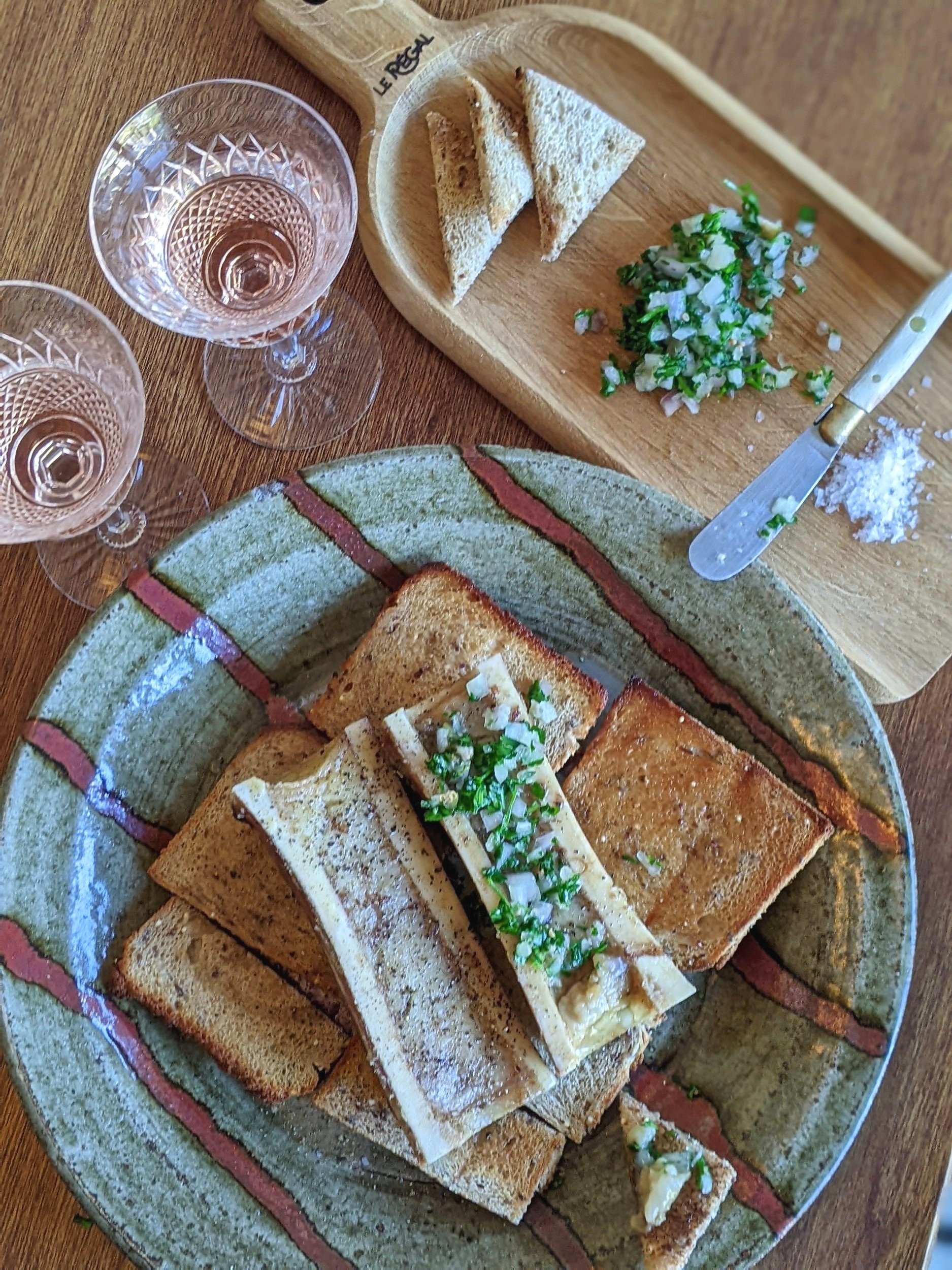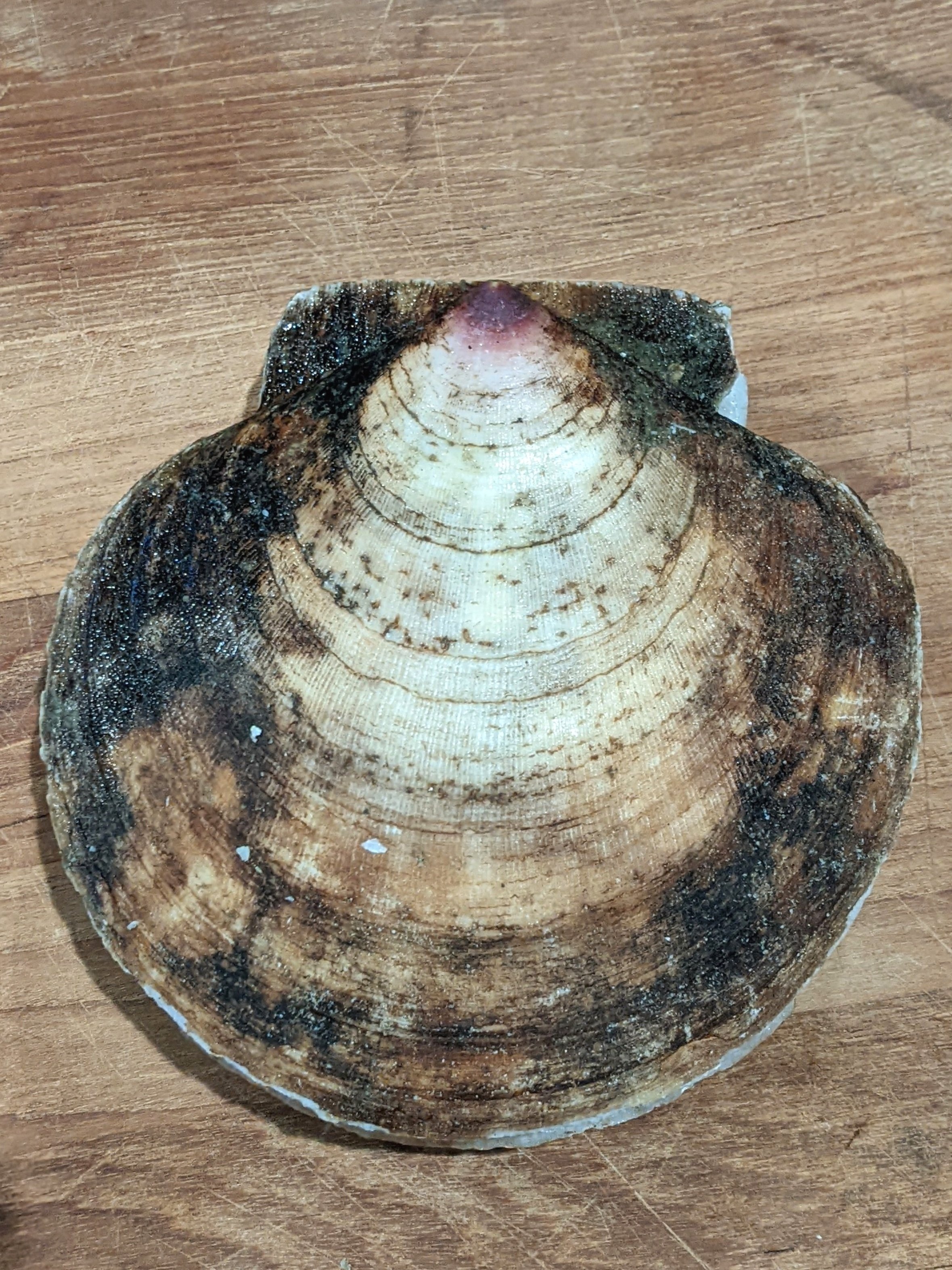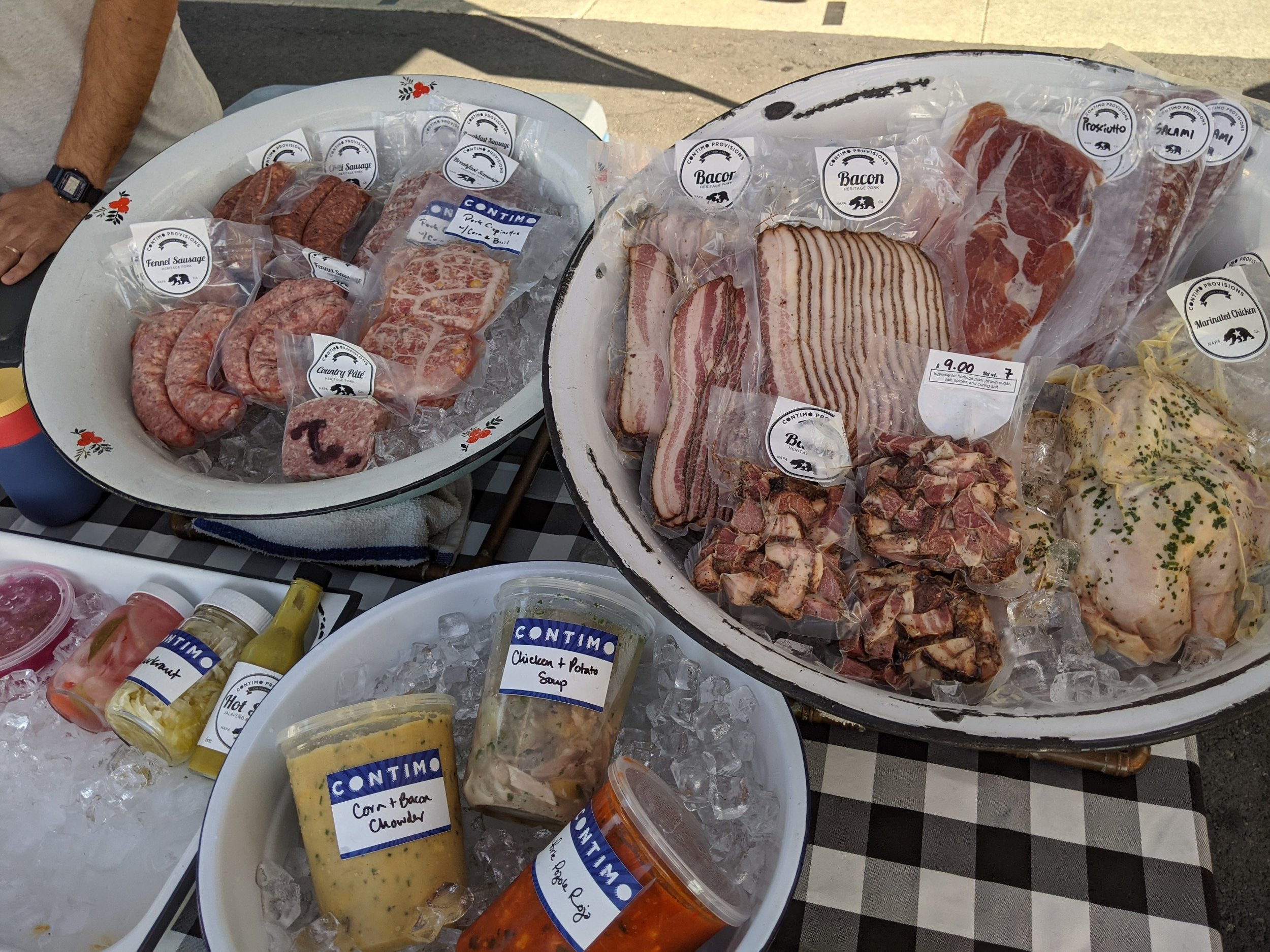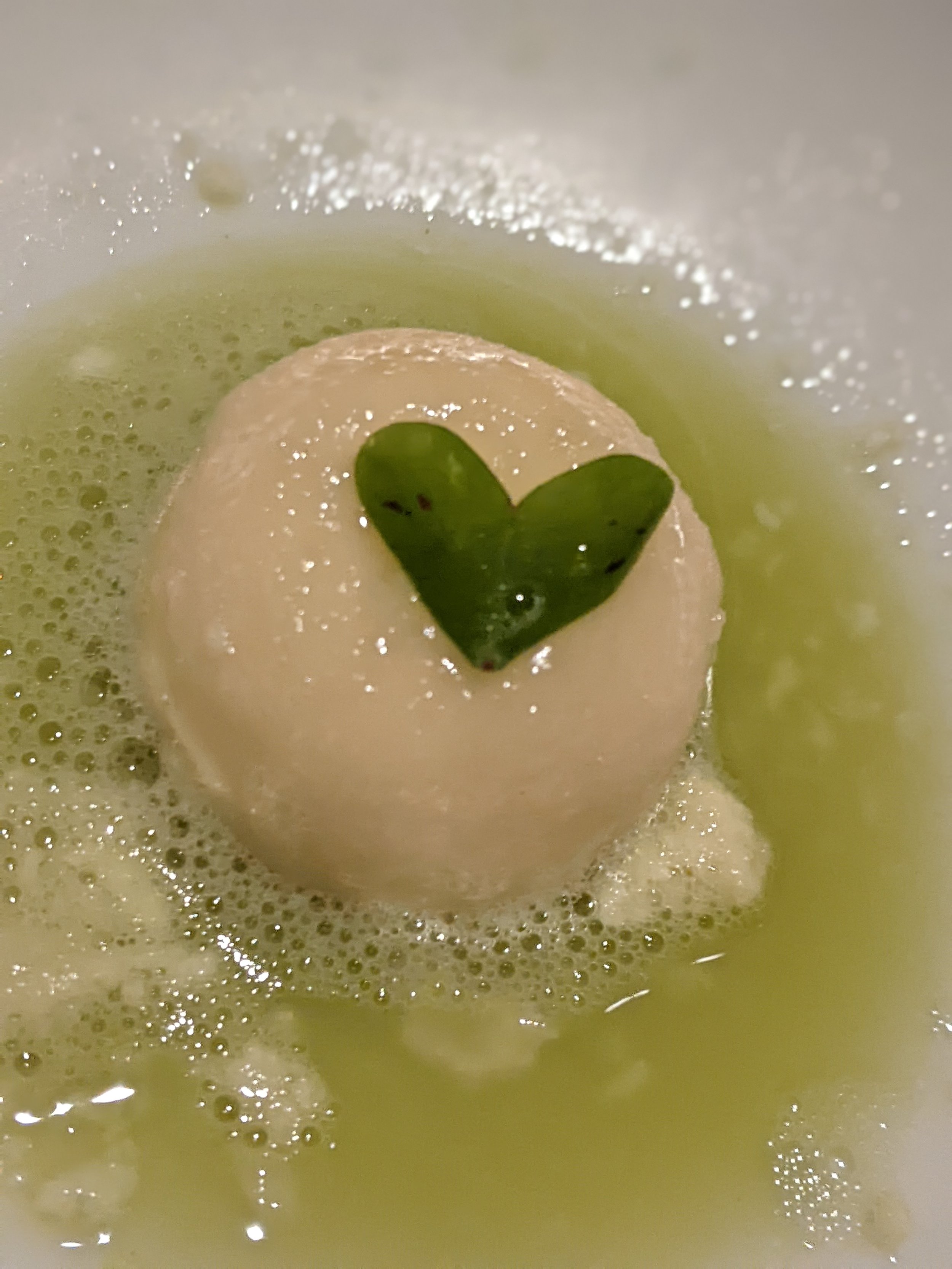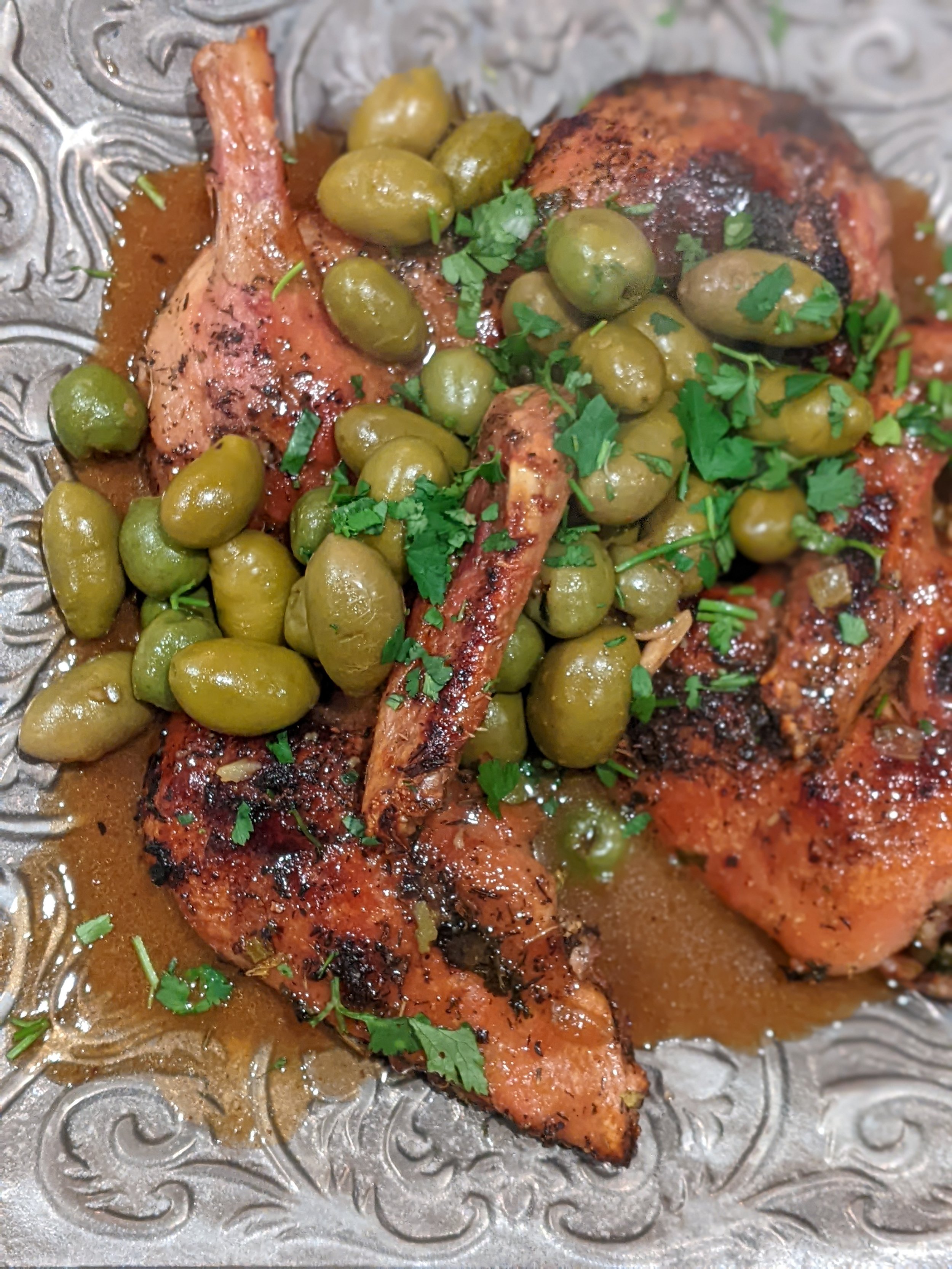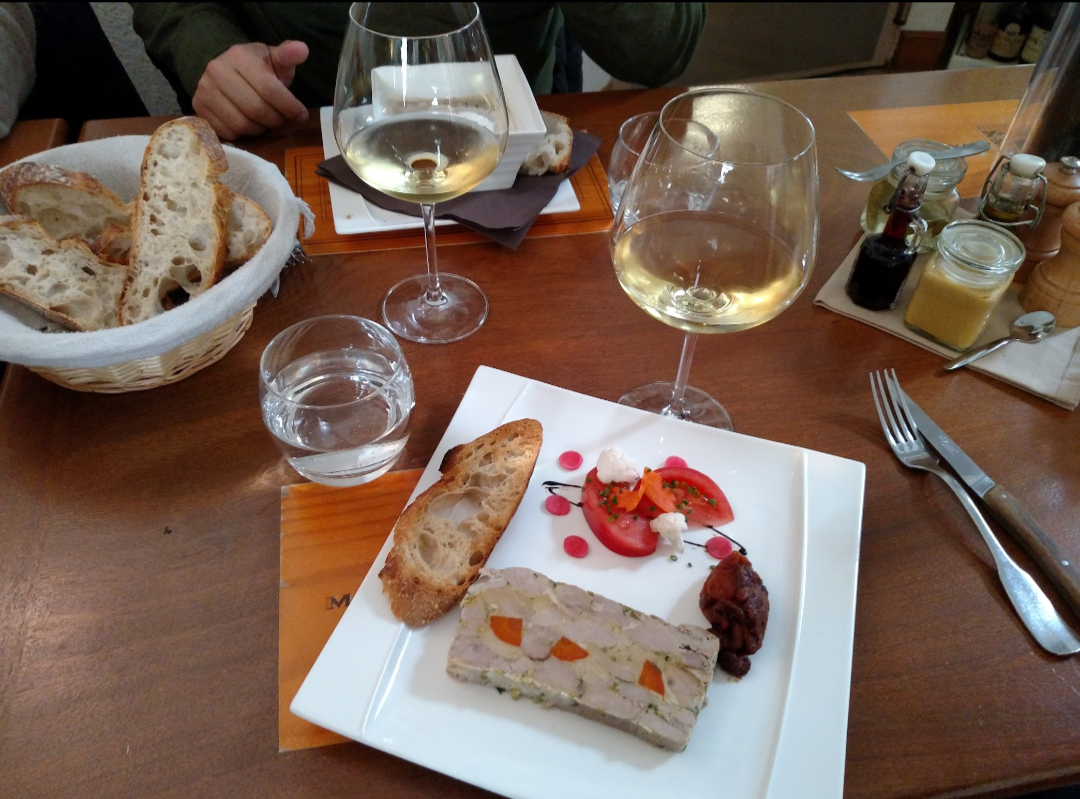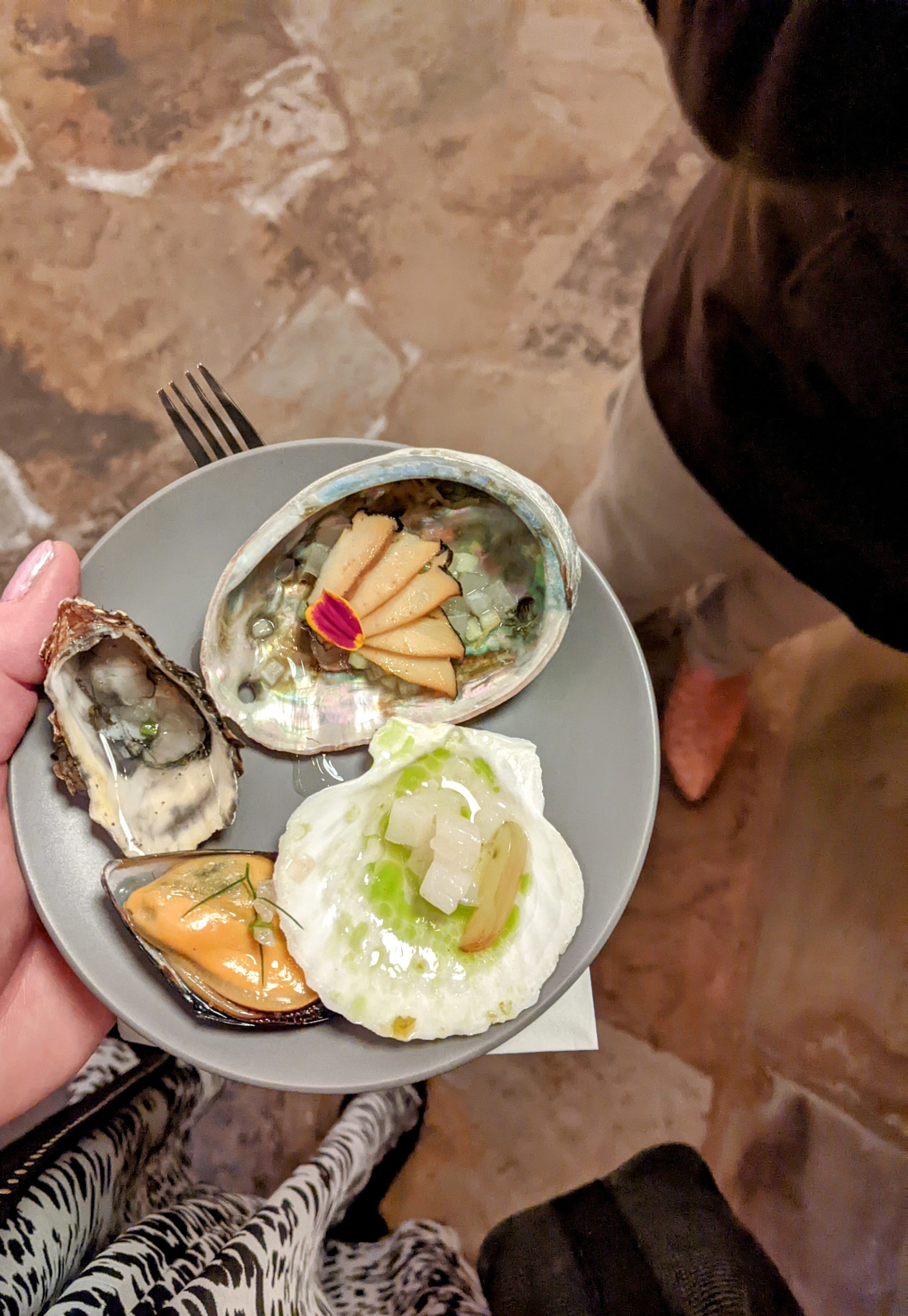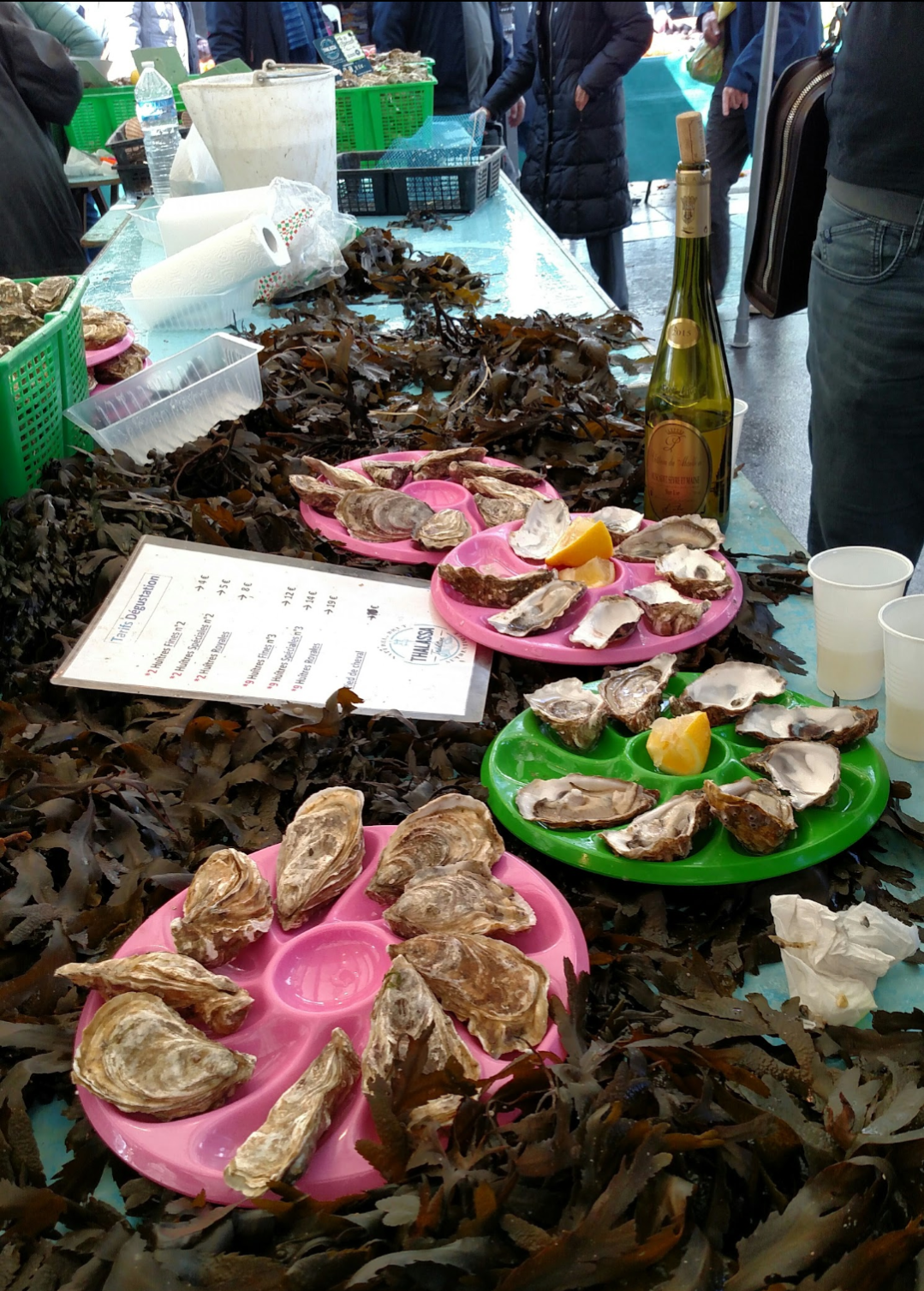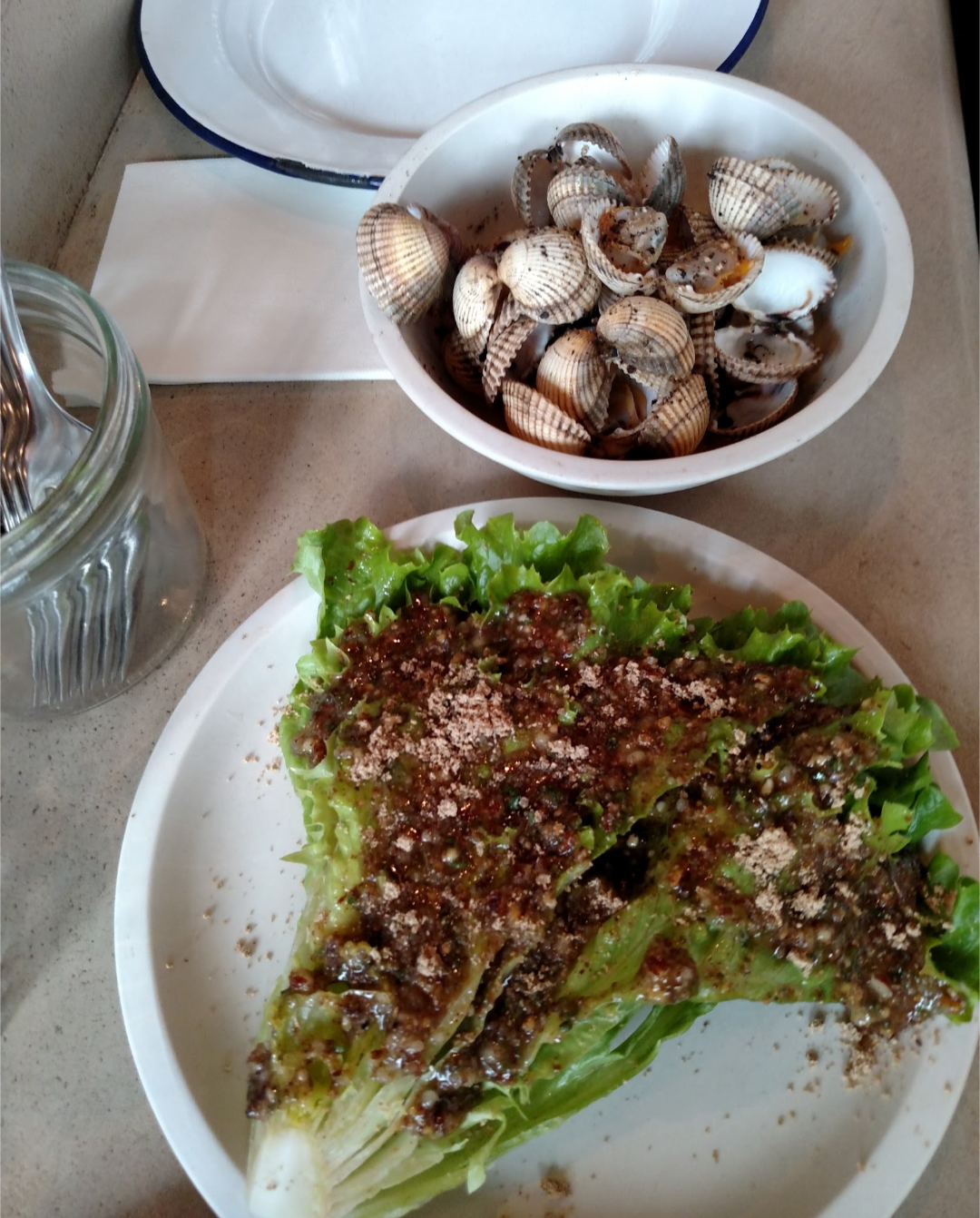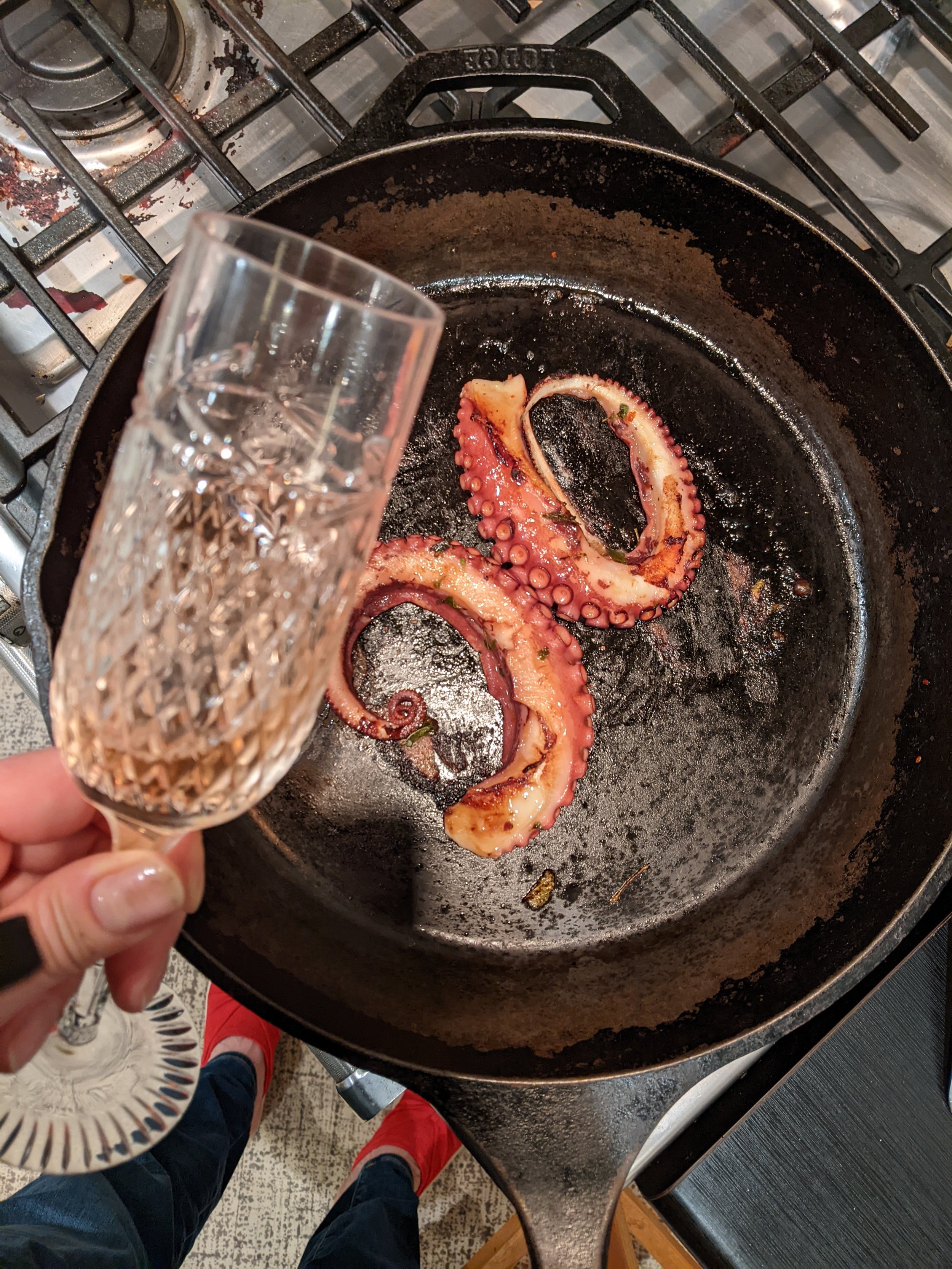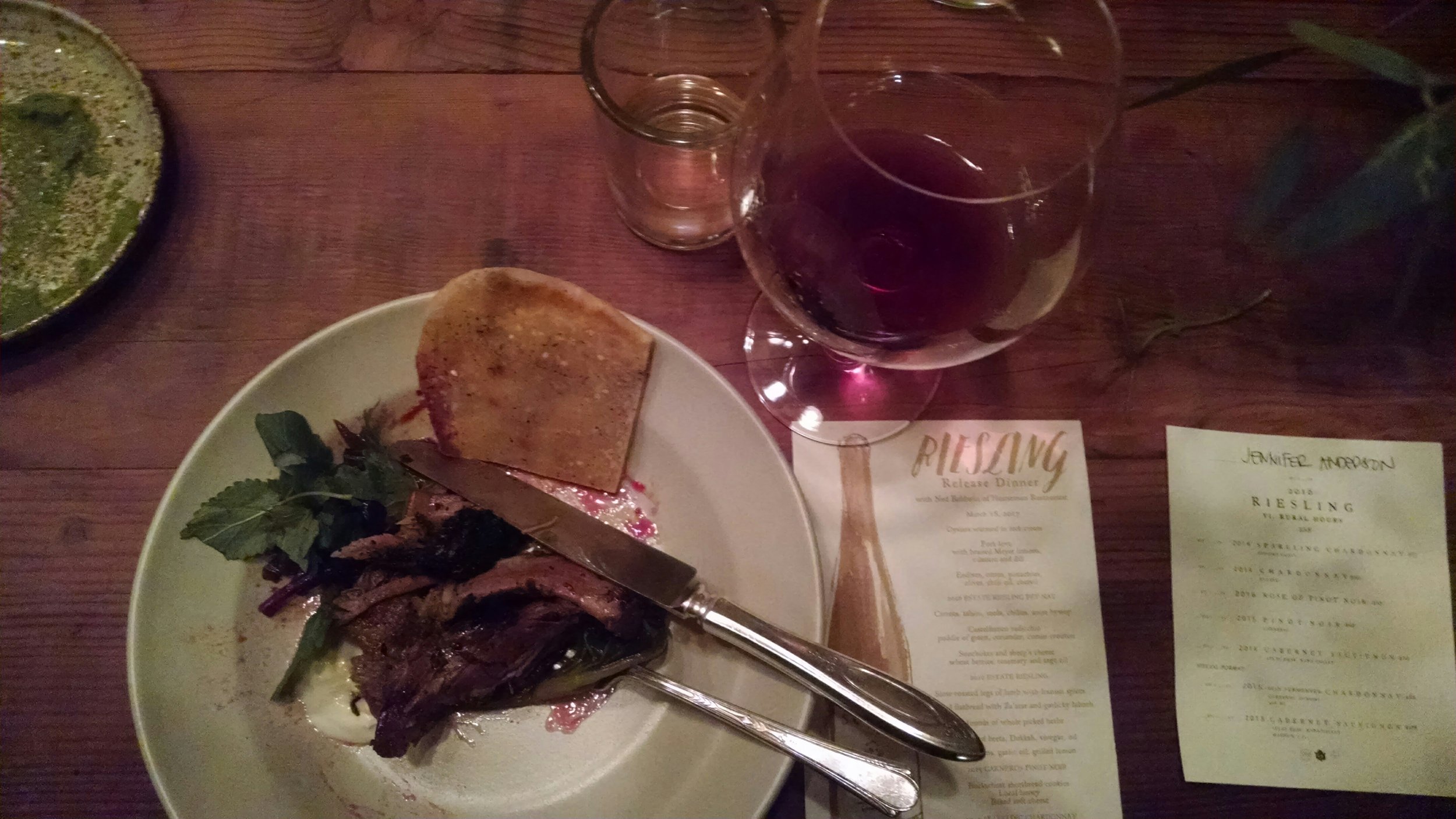Aphrodisiacs
Art by Pella Anderson
Last February, Kristof and I blindly stumbled our way into an interesting Valentine’s Day dinner.
First course: Our farmers’ market has a vendor who sells thick, kettle-cooked potato chips that are unbroken, slightly sweet from the caramelization of the Yukon gold potato, and perfectly salted. We topped the chips with crème fraîche and a dollop of salmon roe. That would pair nicely with California sparkling wine, but I recall that we were drinking rosé. So good, you could call it a night! But we didn’t.
Second course: Any time Kristof goes to the enology lab to drop off samples, he likes to swing by the nearby fish market. He brought home a fresh scallop, still in its shell. We stared at the lavender and taupe shell a while, unsure where to begin. Finally, we pried it open, cut and dried the scallop, and sliced it thinly. We stood in the kitchen eating raw scallop slices dipped in soy sauce with chopsticks.
Third course: There were oysters, too. We broiled them with cream, spinach and parmesan cheese and mopped up the sauce with bread. A fresh, minerally Sonoma Coast Chardonnay would have paired well, but we were still drinking the rosé.
Fourth course: I dug a frozen marrow bone out of the freezer. The butcher had cut it the long way, and it was easy to prepare, roasted, and served with parsley salad and toast points on which to spread the unctuous, golden marrow. What would pair well with this? Maybe a Sangiovese to cut the fat. We finished our bottle of rosé with a feeling of glowing well-being, as if we had been replenished at the cellular level.
Well-being is an interesting emotion to ponder because it so wholly encompasses both body and mind. When do you feel well-being? When you’ve been walking through a hard rain and enter the warm house. After a day at the beach, when you wash off the salt and sand and put on fresh clothes.
There was no dessert because we didn’t want any. Our odd meal comprised of dense bites was rich yet light. Easy to fix, yet not with ingredients readily available at the supermarket. Decadent, yet less expensive than prime rib and a baked potato in a crowded restaurant. Later, something occurred to me. What did the courses have in common? Each was an aphrodisiac.
If you want to fall asleep fast, do an internet search for “aphrodisiacs.” Could we possibly make the topic of energy, sexual energy in particular, more boring? Your health plan has a blog that pushes asparagus. Don’t believe it.
Carnivores are carnal. Here’s what they eat: bone marrow, oysters, sliced raw sea scallops and other foods from the sea, liver pâté, crisped sweetbreads in a fruit and demi-glace sauce, calf brain, vegetables braised in butter or cream. Monks fast and eat soy for a reason; saints roam the desert eating grasshoppers and wild honey. Sex hormones, all hormones, are composed of cholesterol; the brain itself is mostly fat.
Life-force energy, elan vital (whatever you call it) is not separate from fertility in human design, and the same nutrients that replenish and revitalize our minds and moods and sensations of well-being also stoke erotic energies. The Cleveland dentist Weston A. Price (1870-1948) argued powerfully about the link between vitality and carnal foods. He discovered that isolated, traditional cultures, whether Swiss, Inuit, or Masai, had inherited ingenious methods for obtaining vitamins A, D, and K-2 and promoting human fertility, whether they consumed raw goat cheese, whale blubber, or cow’s blood and milk. (They also had straight teeth.)
But all things with balance, please. I think I need a salad.
Of all beverages, wine is most likely to be an aphrodisiac, in my opinion. Wines can be full of vitality and life-force energy. Examples? A fresh white wine that makes you think of the green heart of a white rosebud. Wines that taste like licking ocean air off your lips. Unexpected freshness in a Cabernet Sauvignon.
Revelation, a Syrah that tastes of bacon fat and black pepper but then surprises you with a subtle spark of violet or crushed lavender in the core. Some people have a weakness for wines that are reminiscent of sweat, salt, fine leather gloves.
I’m partial to the “heartbreak grape,” Pinot Noir, thin-skinned and unpredictable. When done well, drinking it’s like having a conversation. A vital wine has length and movement. You start in one place, then take a journey that ends with harmony and coherence.
But not all wines have life or energy or movement. Maybe most don’t. This mystery sends people back to the vineyard. It keeps wine lovers alert.


